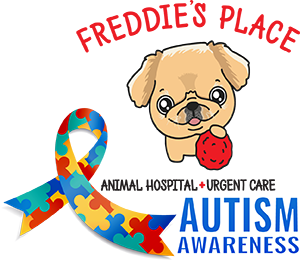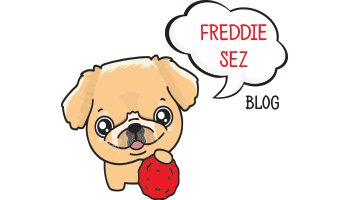Symptoms, Spreading, Prevention, and Cure for the Dog Flu
Canine Influenza is bouncing back, with a vengeance. Chances are almost certain it’s in your state, maybe your county or city, it could even be lurking in common dog hangouts like playgroups, dog parks, obedience classes, or long walks in crowded places… and let’s be clear, once it gets loose, it gets real serious… real fast. Like most seasonal human illnesses, the Dog Flu is not fatal in nearly all cases. However, the cost of treatment, veterinarian visits, medications, and the impact of feeling uncomfortably sick takes on your best buddy makes knowing the symptoms, how the virus travels, and steps to take to avoid it important to all dog owners.
By the Numbers
The Dog Flu is a respiratory disease that is caused by an influenza infection. Currently, there are two known strains of the illness found in the United States
H3N8 – This strain started as a horse exclusive illness. Over time the virus jumped to dogs, as it was discovered and named in 2004 when a pack of racing Greyhounds at a track in Florida all contracted this, at the time, strange illness.
H3N2 – This variant is possibly a mutation of the Bird Flu, and scientists believe it make its way from Asia to the US, being handed off from bird to bird during seasonal migration. The first know outbreak of H3N2 was in 2005, centered in the Midwestern states. It continues to spread and become more aggressive throughout the Nation.
In a 2021 end of season report, Dogflu.com indicated that only four states were free of Canine Influenza reports. Now understand, this does not mean that the virus is not in these states (Alaska, Hawaii, Nebraska, North Dakota), it simply means that it hasn’t been reported. Six states only had outbreaks of the H3N8 strain only, two states indicated only the H3N2 variant. A whopping 34 states reported seeing both types of Dog Flu with eight of those states (California, Texas, Indiana, Ohio, Pennsylvania, New York, South Carolina, Florida) reporting recent, heavy outbreaks. As the weather turn colder, the infection rates will rise again.
How long does the Dog Flu take to Run its Course?
From initial exposure to the virus, you’ll start to see your dog show symptoms in two to four days. The intensity increases through the 4th day, then your dog’s immune system should start to figure out whats wrong and turn the tide of battle. Just remember that because your dog is feeling better, it doesn’t mean they aren’t a carrier. The H3N8 can remain contagious for up to 10 days after first exposure, and the H3N2 is even longer at 26 days from the introduction of the virus till they are no longer contagious. The American Kennel Club (AKC) is suggesting from 25 to 30 days of isolation from other animals for a dog who is infected. This will all but eliminate the chances of spreading to other dogs.
What does Canine Influenza Look Like?
- Coughing (both moist & dry cough)
- Sneezing
- Nasal discharge (runny or snotty noses)
- Runny eyes
- Fever
- Your dog is unusually dormant or lethargic
- Visible signs of respiratory distress (difficulty or unusual noises when breathing)
You’ll notice that a lot of these symptoms mirror other illnesses, like Kennel Cough. If you feel your dog has the flu, or you’re uncertain which virus they’ve contracted, see your wellness care veterinarian.
How do we Get my Dog on the Road to Recovery?
See the Vet, ASAP – there is no known cure for the Dog Flu, at least not yet. Your primary care veterinarian will advise you on the best ways to keep your dog comfortable during the run of the flu. If your dog shows signs of dehydration or the cough seems to not get better your vet might prescribe a Sub-Q or IV fluid treatment, Rx medications for fever reduction or to help with the cough. In some more aggressive cases, you might even be given antibiotics to treat other connected infections.
Your vet will also advise and council you on the length and suggested process to isolate your dog to protect other animals.
Since the viruses are new, aggressive, and year round threats in some states, your veterinarian may be required to report cases of Dog Flu to Government agencies monitoring the status and spread of cases in your area. This type of information helps, similar to contact tracing in human illnesses. How a virus mutates, migrates, and spreads is important to understanding how to treat and avoid outbreaks.
How do I Prevent my Dog from Catching Canine Influenza
The short answer is that you may not be able to. If your dog frequents public places, is kenneled, is a dog park junkie, likes long walks in the park, is a habitual sniffer and licker, has a regular grooming ritual as a salon, or is a social butterfly… unless you want to change up their routine… your setup for dealing with the Dog Flu. Again, this is rarely fatal, it will probably just make your dog miserable.
Your best bet is to keep informed and understand the situation in your area. Check in with your vet, read internet reports on outbreaks and trends, check the websites of common dog hangouts (like kennels, Pet Stores, Dog Parks, groomers) to see if they are reporting an outbreak among their clients.
There are vaccines available for both Dog Flu strains. For a normal “hang out at home” kinda dog, these are not needed. However, if your have a crowd pleasing, party going, park pounding, “never met a butt I didn’t sniff”, hangs with the wild pack, Dog on the Town, you may want to involve your vet to see if they believe your dogs lifestyle makes them a vaccine candidate.
One final note, as of the writing of this Dog Blog, there are ZERO known cases of humans contracting Dog Flu. So, you have no worries about being the Caretaker in Charge of your dogs road to recovery.
That’s our full report on Canine Influenza. The short version of all these facts and bullets is… keep yourself aware and educated on Dog Flu in your area. Don’t over react because it’s not a fatal illness. Be ready to isolate you dog, play nursemaid, and monitor their progress on the road to recovery. ALWAYS involve your Veterinarian for advice, assistance, answers to questions, or help with solutions. We hope this information will be helpful should the flu come knocking at your door.
 Howl-o-Ween is coming fast, so prepare your home and pets for the Trick or Treaters invasion into their space. Doorbells, knocks, strangers, weird costumes, the temptation of chocolate treats, and he motion and commotion of the Halloween activities will have your dog on high alert. If needed, create a safe, isolated, and quiet space for your pooch to ride out the wave of visitors asking for treats. If your dog is well behaved and can “go with the flow”, don’t be afraid to take them out into the night with your kids as you go from house to house, or let them help hand out candy.
Howl-o-Ween is coming fast, so prepare your home and pets for the Trick or Treaters invasion into their space. Doorbells, knocks, strangers, weird costumes, the temptation of chocolate treats, and he motion and commotion of the Halloween activities will have your dog on high alert. If needed, create a safe, isolated, and quiet space for your pooch to ride out the wave of visitors asking for treats. If your dog is well behaved and can “go with the flow”, don’t be afraid to take them out into the night with your kids as you go from house to house, or let them help hand out candy.
Till next week, we certainly wish you fun, happy times, lots of love and licks, and a wonderful romp into the Pet Friendly World. Be Good to Each Other, #FreddieSez!



 How Could My Dog Catch the Virus?
How Could My Dog Catch the Virus?

Leave A Comment